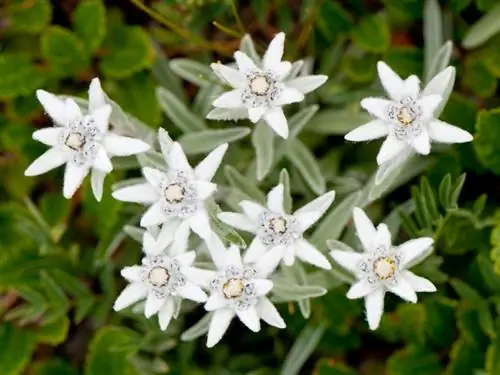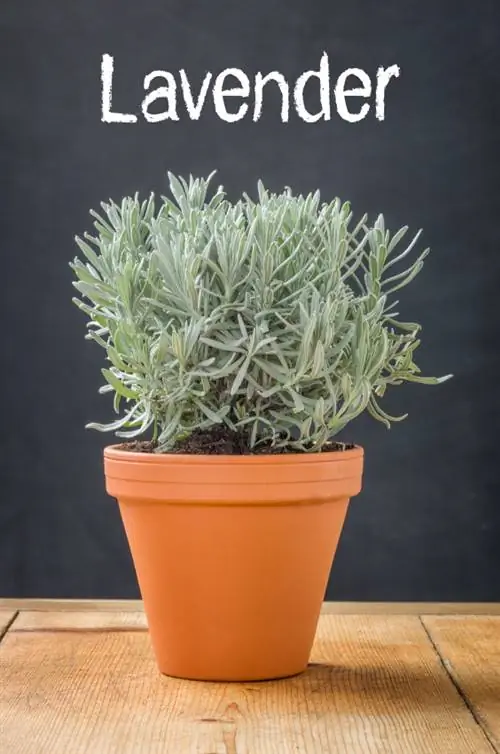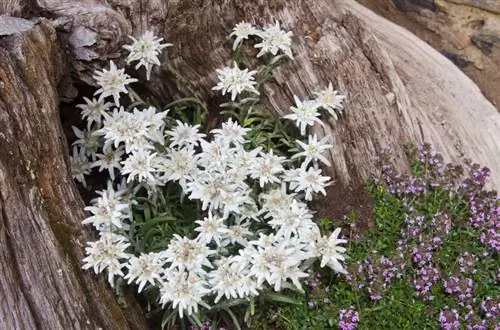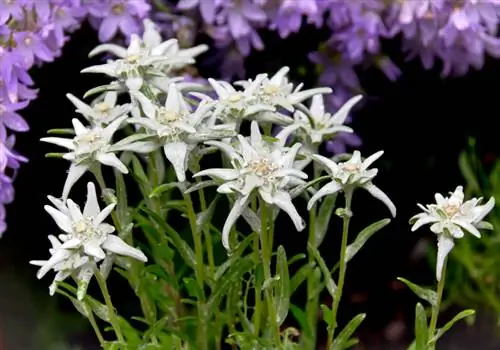- Author admin [email protected].
- Public 2023-12-16 16:46.
- Last modified 2025-01-23 11:20.
The edelweiss (Leontopodium alpinum), which is only rarely found in nature despite intensive conservation efforts, is a real garden rarity and therefore an eye-catcher. The perennial, which is used to poor soils, thrives particularly well in rock gardens. The maintenance effort is very low.
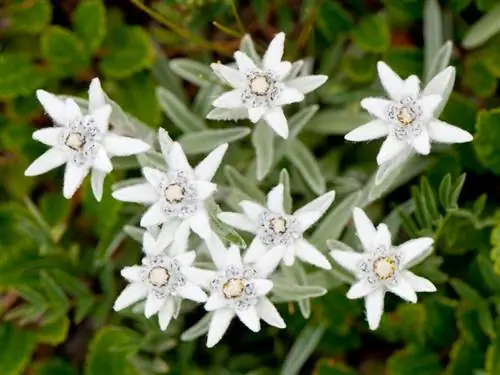
How do I care for my edelweiss?
Edelweiss requires little care: only water in dry periods, fertilizing is not necessary, cut off spent flower stalks, protect it from pests and diseases. Use brushwood or jute sack as protection in winter.
How often do you have to water edelweiss?
Edelweiss planted in the garden does not need to be watered. Quite the opposite, because the alpine plant can only tolerate a little water. You should only water in very dry periods. However, the soil itself should not be dry, because edelweiss prefers a fresh substrate. Do not let the edelweiss dry out in the pot, but only water it moderately.
When and how should you fertilize edelweiss?
Edelweiss does not need regular fertilization.
Can I also cultivate edelweiss in a pot?
In principle, edelweiss can also be cultivated in a pot, but the plant is not suitable as a houseplant. The planter needs very good drainage, should be made of a natural material (clay or similar) and should also be placed in a sunny place on the balcony or terrace. The plant substrate is as low in nutrients as possible and slightly alkaline. A mixture of sand and commercially available potting soil is very suitable. Be sure to avoid waterlogging.
Can you cut edelweiss?
Yes, because the spent flower stems should be removed immediately. They rob the plant of too much strength. After flowering, cut the perennial to a hand's width above the ground. However, this measure is not necessary because you can simply let the seeds ripen and multiply the edelweiss.
Which pests often attack edelweiss?
Caution: Snails love Edelweiss. Ample protective measures should prevent the voracious animals from feasting on your new planting.
Signs of which diseases should you look out for in edelweiss?
Pay particular attention to signs that indicate (supposed) dryness. However, if the edelweiss appears to be drying out from below, it is usually not a lack of water, but, on the contrary, overwatering. In this case, the roots have already started to rot and all you have to do is dig up the plant, remove diseased roots and replant it in a new location.
Is edelweiss hardy?
Edelweiss is considered hardy in Central European latitudes.
How can you overwinter edelweiss safely?
Cover the edelweiss with some brushwood in winter. Edelweiss in the pot can also be protected with a jute bag wrapped around the pot. In winter the perennial retreats into its roots, from which it finally sprouts again in spring. That's why it's not a big deal if above-ground parts freeze - it just shouldn't affect the roots.
Tips & Tricks
To do something good for the perennial, sprinkle some lime around the plant before planting and mix it lightly with the soil.

